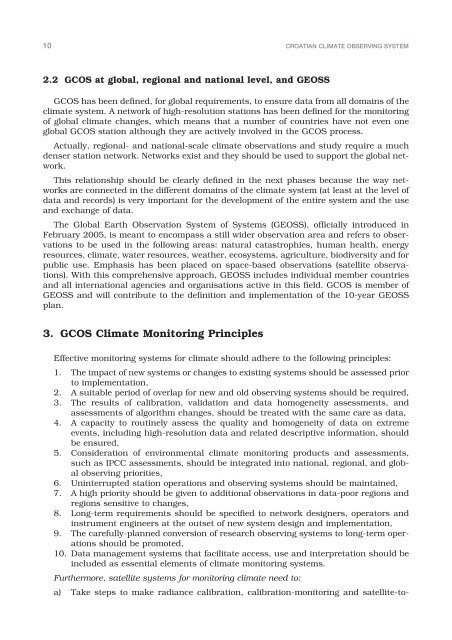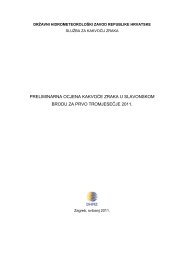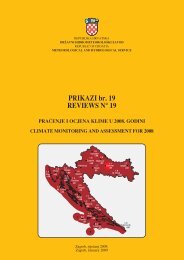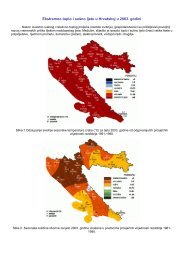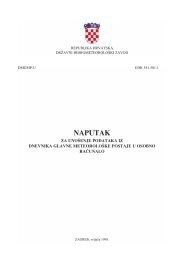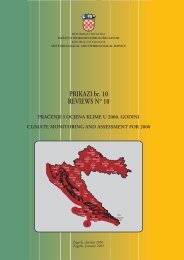CROATIAN CLIMATE OBSERVING SYSTEM
CROATIAN CLIMATE OBSERVING SYSTEM
CROATIAN CLIMATE OBSERVING SYSTEM
You also want an ePaper? Increase the reach of your titles
YUMPU automatically turns print PDFs into web optimized ePapers that Google loves.
10 <strong>CROATIAN</strong> <strong>CLIMATE</strong> <strong>OBSERVING</strong> <strong>SYSTEM</strong><br />
2.2 GCOS at global, regional and national level, and GEOSS<br />
GCOS has been defined, for global requirements, to ensure data from all domains of the<br />
climate system. A network of high-resolution stations has been defined for the monitoring<br />
of global climate changes, which means that a number of countries have not even one<br />
global GCOS station although they are actively involved in the GCOS process.<br />
Actually, regional- and national-scale climate observations and study require a much<br />
denser station network. Networks exist and they should be used to support the global network.<br />
This relationship should be clearly defined in the next phases because the way networks<br />
are connected in the different domains of the climate system (at least at the level of<br />
data and records) is very important for the development of the entire system and the use<br />
and exchange of data.<br />
The Global Earth Observation System of Systems (GEOSS), officially introduced in<br />
February 2005, is meant to encompass a still wider observation area and refers to observations<br />
to be used in the following areas: natural catastrophies, human health, energy<br />
resources, climate, water resources, weather, ecosystems, agriculture, biodiversity and for<br />
public use. Emphasis has been placed on space-based observations (satellite observations).<br />
With this comprehensive approach, GEOSS includes individual member countries<br />
and all international agencies and organisations active in this field. GCOS is member of<br />
GEOSS and will contribute to the definition and implementation of the 10-year GEOSS<br />
plan.<br />
3. GCOS Climate Monitoring Principles<br />
Effective monitoring systems for climate should adhere to the following principles:<br />
1. The impact of new systems or changes to existing systems should be assessed prior<br />
to implementation,<br />
2. A suitable period of overlap for new and old observing systems should be required,<br />
3. The results of calibration, validation and data homogeneity assessments, and<br />
assessments of algorithm changes, should be treated with the same care as data,<br />
4. A capacity to routinely assess the quality and homogeneity of data on extreme<br />
events, including high-resolution data and related descriptive information, should<br />
be ensured,<br />
5. Consideration of environmental climate monitoring products and assessments,<br />
such as IPCC assessments, should be integrated into national, regional, and global<br />
observing priorities,<br />
6. Uninterrupted station operations and observing systems should be maintained,<br />
7. A high priority should be given to additional observations in data-poor regions and<br />
regions sensitive to changes,<br />
8. Long-term requirements should be specified to network designers, operators and<br />
instrument engineers at the outset of new system design and implementation,<br />
9. The carefully-planned conversion of research observing systems to long-term operations<br />
should be promoted,<br />
10. Data management systems that facilitate access, use and interpretation should be<br />
included as essential elements of climate monitoring systems.<br />
Furthermore, satellite systems for monitoring climate need to:<br />
a) Take steps to make radiance calibration, calibration-monitoring and satellite-to-


